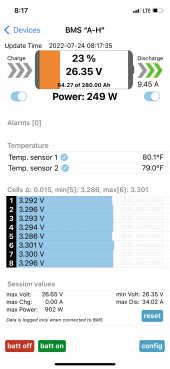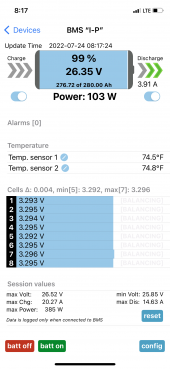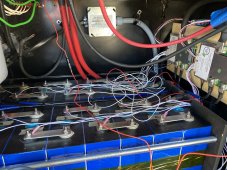LivingTheDream
New Member
- Joined
- Feb 15, 2021
- Messages
- 135
Hey everyone,
Just fired up my system. I have two 24v 280Ah Eve packs built with Overkill 8s BMS’s attached. So my total system has 16 cells (8s2p) for a 24v 560Ah system. I’m running an MPP Hybrid LV2424.
My question is this…how do the two packs work together? It seems like one was pulling power from the other and I can’t figure out why. Each pack was top balanced, but I did hook up the first pack before the second one, so the two packs are NOT equal. Let me know if I forgot any detail needed.
Just fired up my system. I have two 24v 280Ah Eve packs built with Overkill 8s BMS’s attached. So my total system has 16 cells (8s2p) for a 24v 560Ah system. I’m running an MPP Hybrid LV2424.
My question is this…how do the two packs work together? It seems like one was pulling power from the other and I can’t figure out why. Each pack was top balanced, but I did hook up the first pack before the second one, so the two packs are NOT equal. Let me know if I forgot any detail needed.







